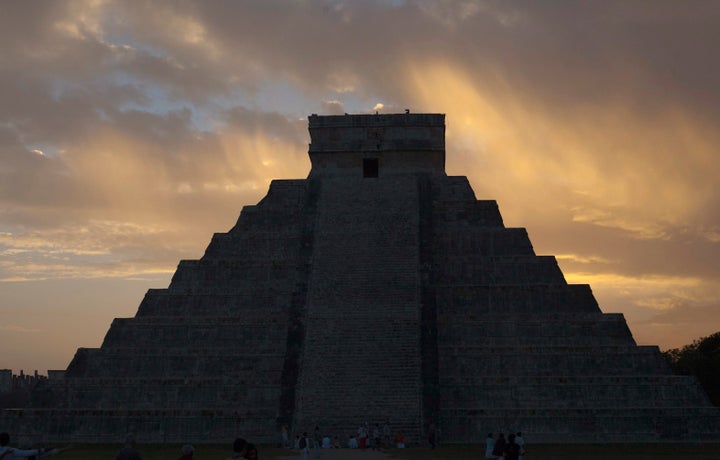Archaeologists have discovered what may be the original structure built at the pyramid of Kukulkan at the Mayan ruins of Chichen Itza.
Last year, archaeologists using electrical imagining techniques found that the pyramid, which is also known as El Castillo, was built atop a subterranean river, or a cenote.
Experts have long known that a smaller pyramid is encapsulated underneath the visible temple.

Researchers said on Wednesday they had detected an even smaller structure inside the other two structures.
Using what is called tri-dimensional electric resistivity tomography, or “ERT-3D,” they found a 10-meter tall structure within the 20-meter tall ‘intermediate’ pyramid that was covered over by the last construction stage, perhaps around 900 AD.
Archaeologist Denisse Lorenia Argote said: “If we can research this structure in the future it could be important, because it could tell us about the first-period inhabitants” of the site.
Argote, of Mexico’s National Institute of Anthropology and History, said the first structure may be in the “pure Maya” style from between 500 and 800 A.D.
University of California, San Diego anthropology professor Geoffrey Braswell, who was not involved in the latest project but who has conducted research at Chichen Itza, said the discovery may be new, or may be a structure detected in the 1940s.
Braswell said that while digging into the intermediate-layer pyramid in the 1940s, one archaeologist found a third platform buried within it.
“The tunnel was unstable, so we know very little about this platform,” Braswell wrote. “It appears to be much smaller than the outer two pyramids, and is not perfectly aligned within them.”
The computer image distributed by the researchers also showed un underlying structure not quite aligned with the subsequent layers.
Braswell compared the Kukulkan pyramid to a Russian nesting doll, with each layer encapsulating another. But at the bottom, there may be more than one platform encapsulated.
“To make matters more complicated, “ Braswell wrote, “the third Russian doll moving in may actually be one of a set of several small dolls rattling around inside the same shell. We just do not know. “
Rene Chavez, a researcher at the National Autonomous University’s Institute of Geophysics, said the early structure appeared to have a staircase and perhaps an altar at the top that may have just been filled in and preserved. The structure has been mapped, but it is not clear whether it will be excavated.
“Given that no one has excavated this structure ... it is difficult to say with certitude if it is one of the oldest buildings at the site,” Braswell said. “But this is quite possible.”
